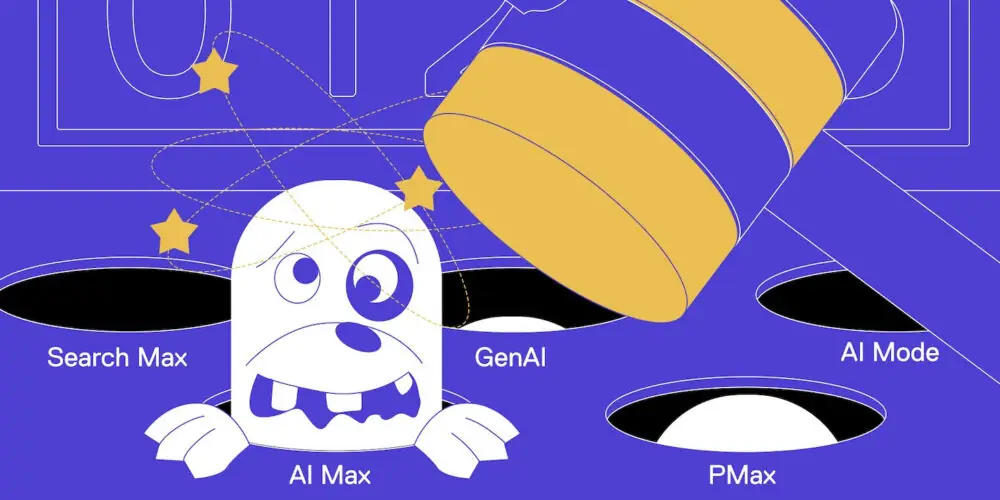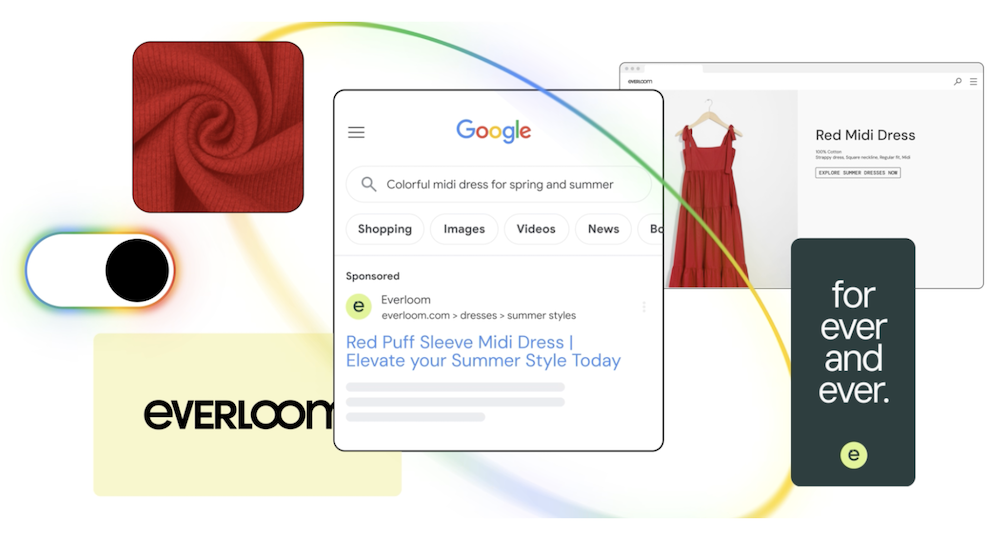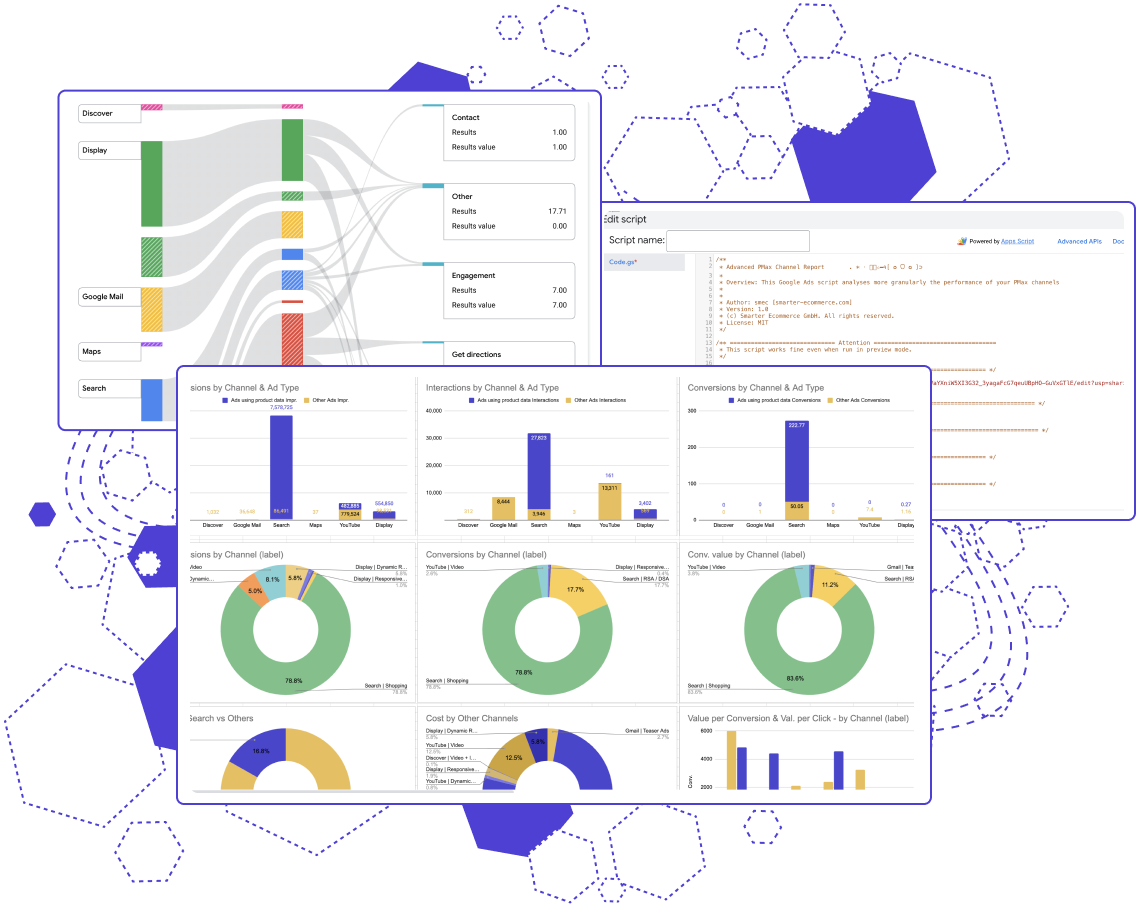Subscribe to join thousands of other ecommerce experts

Rolling out globally in beta this month, one toggle away from turning ho-hum Search ads into an AI-powered conversion magnet. No migration, no drama — just a backstage rewrite of everything you thought you controlled. Is that good?
Table of Contents
So what the is AI Max for Search?
Quick context: AI Max isn’t a new campaign type; it’s a takeover that sneaks PMax-style smarts directly into Search in settings.
Lovely, for sure, but it seems that this part has brought some confusion among our peers. It means that when you push gas accelerator pedal on AI Max for Search you will get:
⚙️ Your average Search Campaign Plus:
- Keyword-less-ish high intent targeting → Based on your keywords, assets & URLs Google hunts for queries that feel right, even if your exact or phrase keywords never show up. (Yes, keywords still anchor but now they’re just optional seatbelts)
- Auto-generated everything → Ads, slugs, final URLs, to match the vibe of each new query and even a {synthetic_keyword} tag for tracking the mayhem.
- Ad-group brand & location controls → Guardrails for geo-intent and brand association* so the AI doesn’t wander off-brand (or off-continent). Which means:
- Brand controls at campaign and ad-group level
- Locations-of-interest targeting = “Show only to people shopping in Berlin, even if they’re Googling from Munich.”
- Better-ish reporting → Aside from the new {synthetic_keyword}, query lists are back, upgraded asset & search-term reports with headline/URL columns are in, but don’t expect 2015-level granularity.
Speed read: Flip the switch and Google grafts a mini-PMax brain onto your Search campaign. Minus the YouTube/Display sprawl.

Why Google did this
Short story: Queries aren’t “cheap black sneakers 42” anymore. They’re “shoes for a mountain wedding.” (At least, that’s what Manuel was searching for 2 weeks ago).
AI Max lets Google predict intent instead of merely matching exact words. Which means that it’s a solution that:
- Captures nuanced, multimodal questions spawning from Gemini, AI Overviews and Lens.
- Opens fresh ad moments that legacy keywords could never unlock.
- Promises +14 % conversions on average (and +27 % if you still live in exact/phrase land).¹
¹ Google internal beta data, May 2025
Flip the switch or hold the line?
Please do a quick sniff test before you YOLO your budget. As with any Google innovation, you need to stay cautious and cold headed, and, of course, make decisions if they make sense for your business, not because you have a FOMO on the latest shiny thing that Google drops on you.
| Scenario | Why you might love It | Why you might hate It |
| Broad-match believer (you also love your DSA, ACA, tROAS) → | More reach, less 10k keyword list-maintenance | Still less control than you think, and also higher CPC volatility. |
| PMax refugee but AI supporter → | Search-only focus, no channel sprawl (Display, we look at you.) | AI Max can still ignore your “no thanks” signals. Also, if you need 2015-style exact-match keyword logs to sleep at night. |
| Brand-sensitive vertical → | Optional auto-assets (with veto power), ad-group-level negatives. | Automation can ruin tone & messaging compliance (very very important for some brands) |
Why not just use PMax?
For advertisers focused on Search, AI Max offers a more streamlined and controllable way to benefit from automation. It avoids the complexity and cross-channel sprawl of Performance Max, while still providing access to Google’s advanced bidding and targeting systems.
AI Max enables Search with AI.
Performance Max activates everything—with or without your input.
| Feature | AI Max | PMax |
| Search-only campaigns | ✅ | ❌ |
| Keyword-based steering | ✅ | ❌ (uses Search Themes) |
| Asset control | ✅ (optional ACA) | ❌ (ACA often on by default) |
| URL expansion | ✅ (opt-in) | ✅ (default on) |
| Ad group-level controls | ✅ | ❌ |
| Query transparency | ✅ | ⚠️ Limited/delayed |
Be curious but stay cautious
Reality check: It feels like a dream. Until loose automation bites your margin and your client or manager sends you a random 1:1 calendar invite.
- Reach ≠ Revenue: Wider net is cool only if margins survive the catch. Unless this is your strategy.
- Inputs still rule: Sloppy copy + generic landing pages = super-charged garbage-in/garbage-out, as usual.
- Negatives are oxygen: Starve irrelevant queries early or pay millisecond later.
- If you test it, put a leash on it: Carve out a new campaign, cap budgets, and benchmark vs. your best legacy setup.
Quick-start checklist
- Audit signals: Are your ad texts, feeds, and landing pages crystal-clear?
- Set hard bounds: Load up brand & SKU negatives before Day 1.
- Watch {synthetic_keyword} tags: They reveal how Google matches fuzzy intent—use them to tighten or widen.
- Track business KPIs, not vibes: ROAS is nice; contribution margin, lead quality and CLV are nicer.
- Scale (or bail): If AI Max beats your baseline after 2-3 conversion cycles, throttle up. If not, toggle off and regroup.
- Launch in a sandbox: Separate AI Max test campaign, cap spend, benchmark against your best Search performer.
Final word
AI Max isn’t a revolution—it’s evolution: Google’s way of future-proofing Search before queries get even messier and more vague. Treat it like a beta superpower: experiment early while the controls are generous and the reporting window is still open. Yes, PMax, we talk about you (here).
Need a sparring partner who’s wrangled every Google Ads curveball since “Enhanced Campaigns”? Hit up the smec crew. We’ll make sure your next click costs less and converts harder.

